Question
Issue: How to fix Network Adapter crashing in Windows?
Hello. My Internet connection keeps disconnecting because the network adapter stops working. What can I do to fix this?
Solved Answer
When a network adapter crashes in Windows, users can have a frustrating experience. Driver[1]] issues are a common source of this problem. Drivers that are outdated or incompatible with the adapter can cause it to malfunction, resulting in slow internet speeds, disconnections, or the inability to connect to the internet at all. Hardware issues, such as a faulty adapter or network card, can also cause the problem in some cases.
Conflicts with other installed applications can also cause a network adapter to crash. Third-party network applications, such as firewalls, VPNs, or antivirus software, can occasionally interfere with network adapter functionality. Furthermore, outdated software can cause compatibility issues and crashes.
The consequences for users can be severe. Slow internet speeds can have an impact on work productivity and impede online activities like streaming and gaming. Frequent disconnections can also be annoying and disrupt ongoing tasks like downloading or uploading files. In extreme cases, being unable to connect to the internet at all can have serious consequences, such as missed deadlines or revenue loss.
Fortunately, there are several options for dealing with a network adapter crash. Updating drivers and software, as well as disabling conflicting applications and resetting network settings, can frequently resolve the issue. This guide will walk you through 5 steps that should help you fix Network Adapter crashing in Windows.
Keep in mind that the manual troubleshooting process can be lengthy. Instead, you can use a maintenance tool like FortectMac Washing Machine X9 that can fix most system errors, BSODs,[2] corrupted files, and registry[3] issues automatically. Otherwise, follow the step-by-step instructions below.
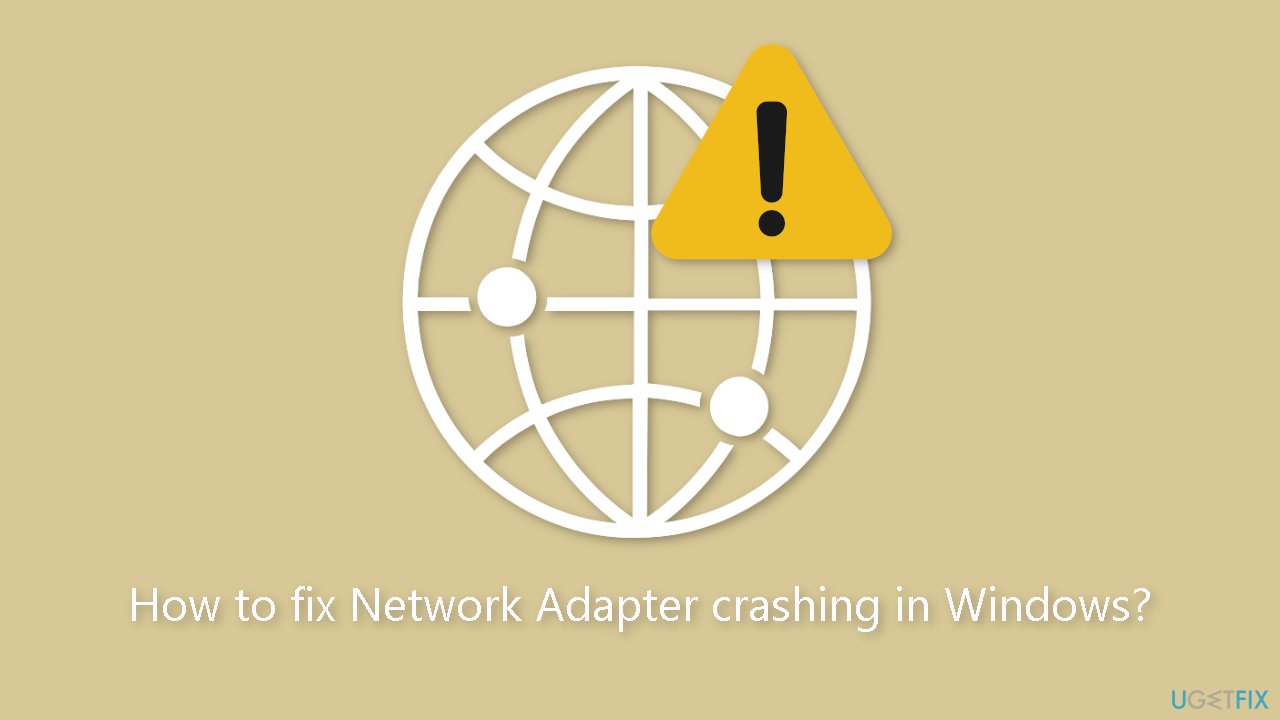
Method 1. Run the Network Adapter Troubleshooter
Windows 11:
- Press the Windows + I keys on your keyboard to open the Settings app.
- Click on the System option.
- On the left side of the screen, scroll down and click on the Troubleshoot option.
- Click on Other troubleshooters.
- Look for the Network Adapter troubleshooter and click on the Run button associated with it.
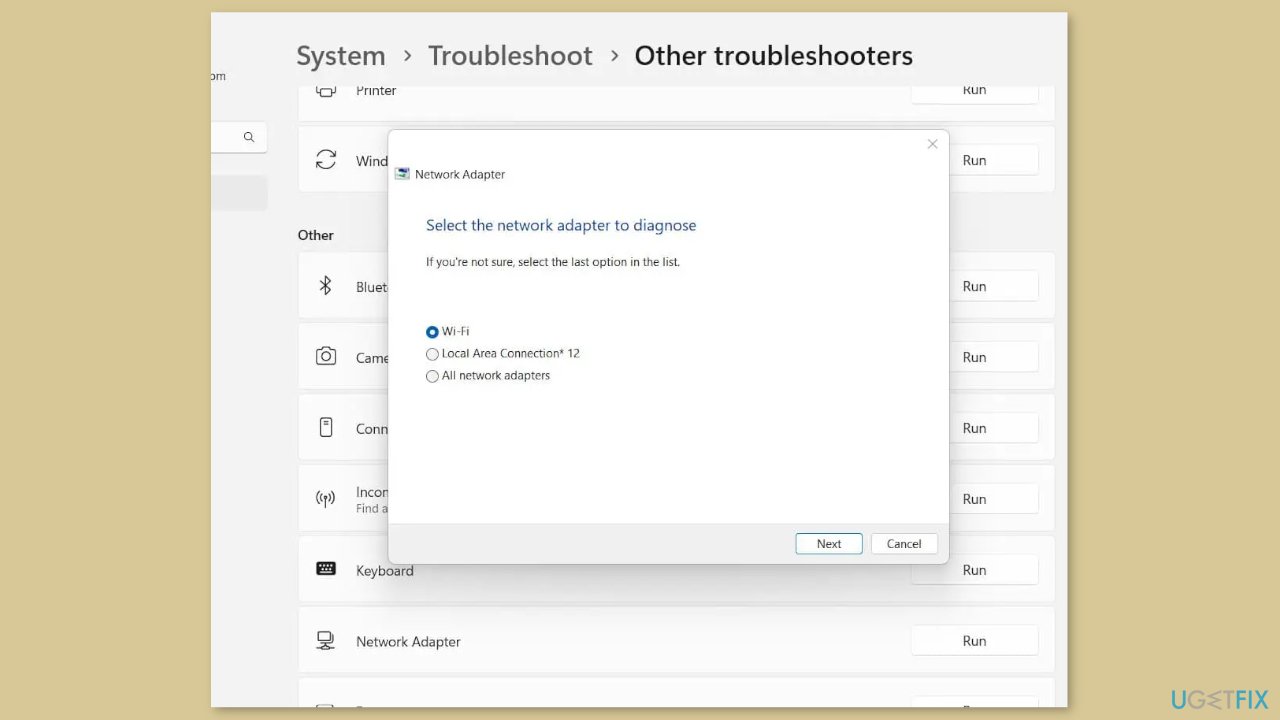
Windows 10:
- Open the Settings app.
- Go to Update & Security.
- Click on Troubleshoot.
- Click on Additional troubleshooters.
- Select the Network Adapter troubleshooter.
- Click on Run the troubleshooter.
Method 2. Re-enable the Network Adapter
Disabling and then re-enabling your network device can help resolve the error if it's caused by a glitch with your networking device.
- Press the Windows key + I simultaneously to open the Settings app.
- Click on the Network & internet tab.
- Click on the Advanced network settings option.
- Click on More network adapter options.
- Right-click on your WiFi connection.
- Select the Disable option from the context menu.
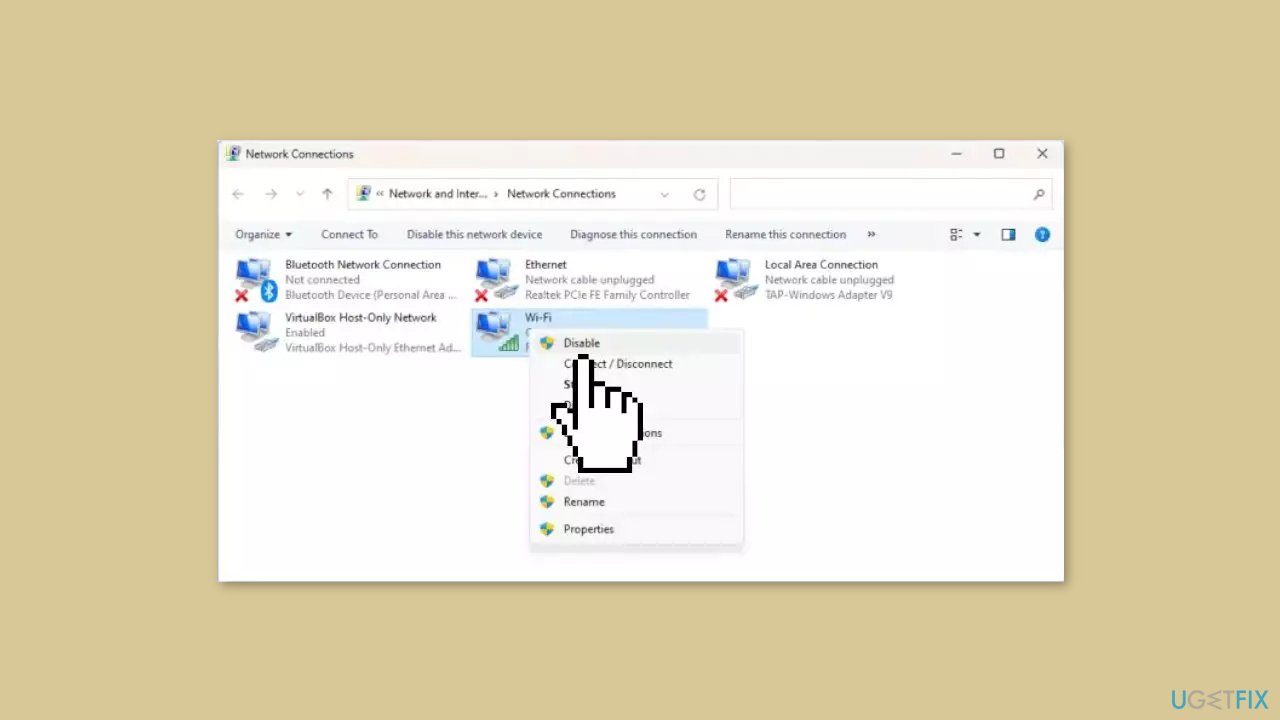
- Wait for some time.
- Right-click on your network connection again.
- Choose the Enable option from the context menu.
Method 3. Update the Network Driver
An outdated or defective network adapter driver is one of the most common reasons behind network crashes. If this is the case, updating your network drivers can resolve the issue:
- Press the Windows key + I simultaneously to open the Settings app.
- Click on the Windows Update tab.
- Click on the Advanced options button.
- Click on the Optional Updates option.
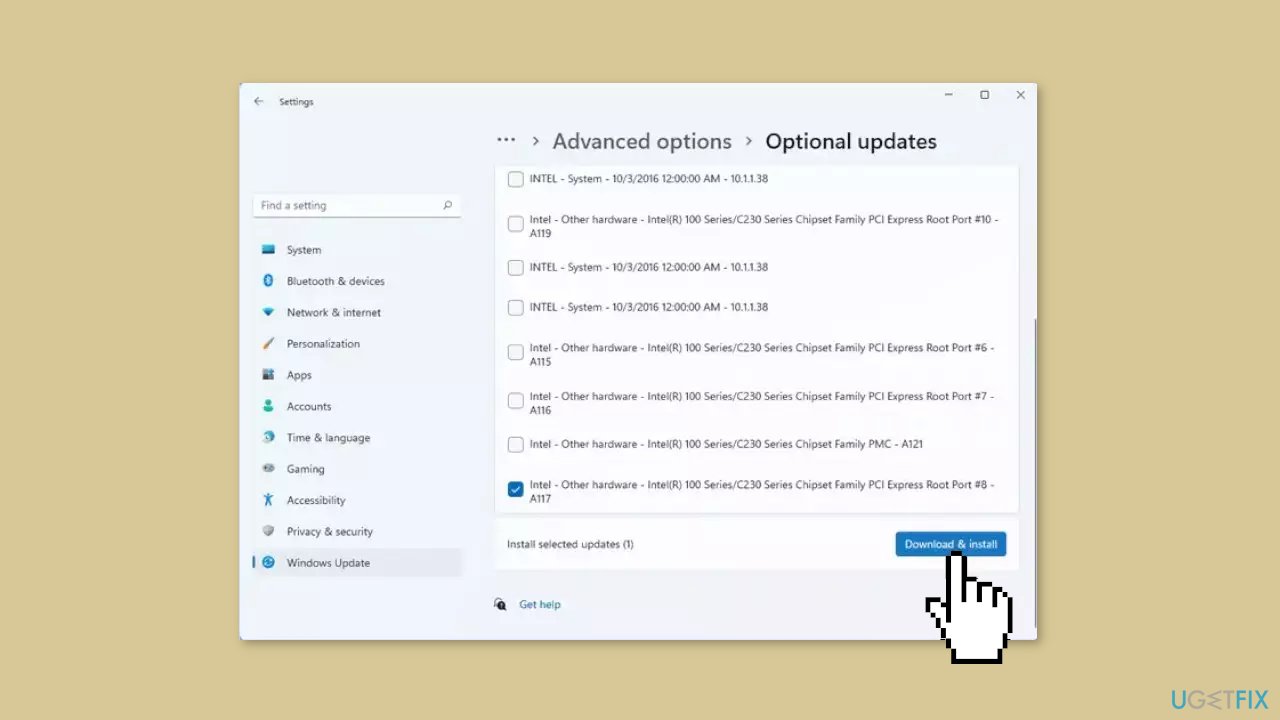
- Check if there are any device driver updates available.
- If there are, you will be able to see them in this section.
- Find the network driver updates and click on the Download & install button.
Method 4. Reset Network
- Right-click on the Start button and go to Settings
- Click on Network & internet in the navigation bar on the left
- Choose Advanced network settings
- Under More settings, click on Network reset
- Click on Reset now
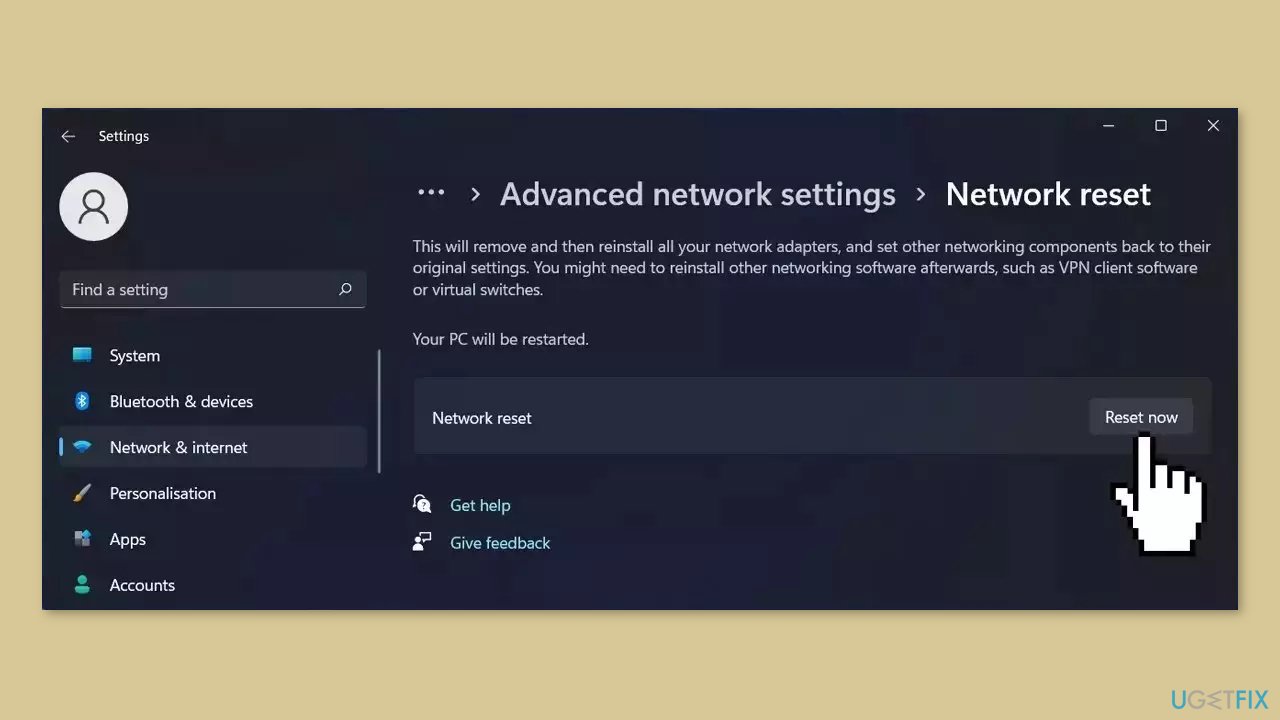
- Your PC will reboot
Method 5. Reset Windows
If none of the previous solutions resolve the issue, consider resetting Windows. Keep in mind that this is a time-consuming process, as the Windows reset will remove all your apps and require reinstallation.
- Press the Windows key + I to open Windows Settings.
- Press on Update & security.
- Click on Recovery in the left pane.
- In the right pane, click on Reset PC next to Reset this PC.
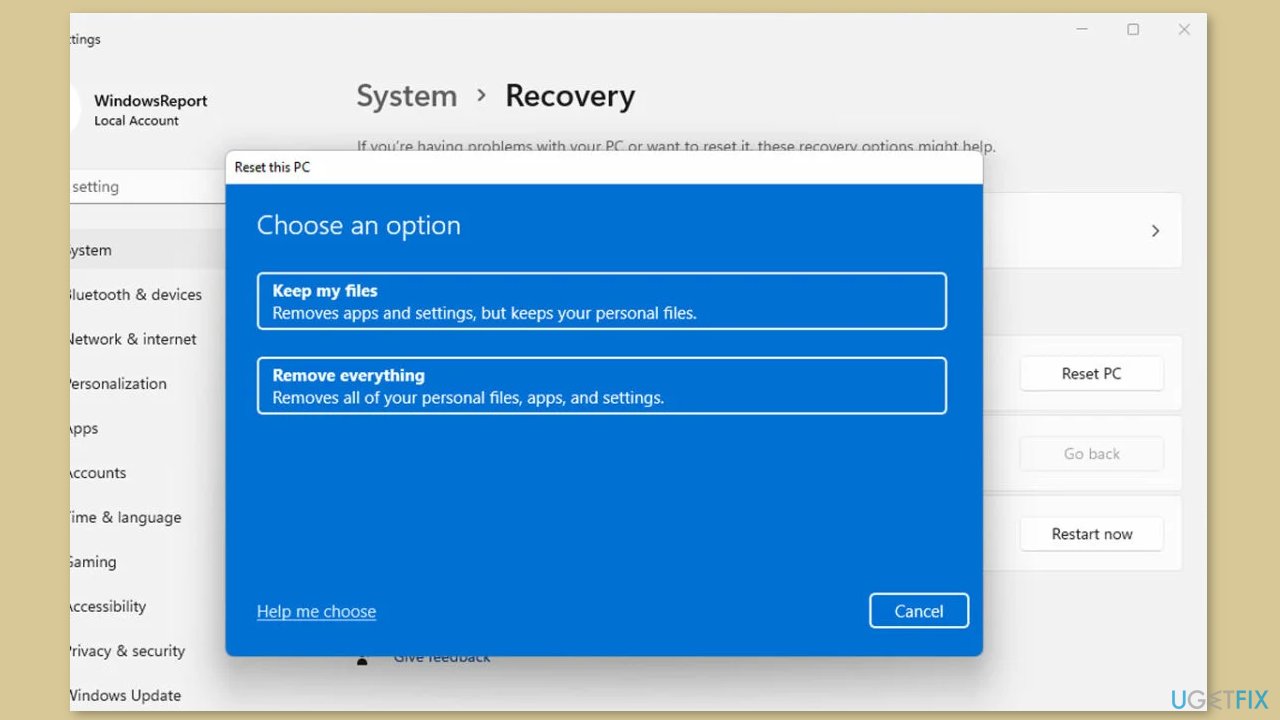
- Click on either Keep my files (if you want the computer to be reset without losing any of the user data stored on it) or Remove everything (if you want the computer to be reset and any and all user data stored on it to be deleted.
- If presented with a warning, simply click on Next.
- When prompted to do so, click on Reset.
Repair your Errors automatically
ugetfix.com team is trying to do its best to help users find the best solutions for eliminating their errors. If you don't want to struggle with manual repair techniques, please use the automatic software. All recommended products have been tested and approved by our professionals. Tools that you can use to fix your error are listed bellow:
Protect your online privacy with a VPN client
A VPN is crucial when it comes to user privacy. Online trackers such as cookies can not only be used by social media platforms and other websites but also your Internet Service Provider and the government. Even if you apply the most secure settings via your web browser, you can still be tracked via apps that are connected to the internet. Besides, privacy-focused browsers like Tor is are not an optimal choice due to diminished connection speeds. The best solution for your ultimate privacy is Private Internet Access – be anonymous and secure online.
Data recovery tools can prevent permanent file loss
Data recovery software is one of the options that could help you recover your files. Once you delete a file, it does not vanish into thin air – it remains on your system as long as no new data is written on top of it. Data Recovery Pro is recovery software that searchers for working copies of deleted files within your hard drive. By using the tool, you can prevent loss of valuable documents, school work, personal pictures, and other crucial files.
- ^ Device driver. Wikipedia, the free encyclopedia.
- ^ Chris Hoffman. Everything You Need To Know About the Blue Screen of Death. Howtogeek. Tech Insight Magazine.
- ^ Tim Fisher. What Is the Windows Registry?. Lifewire. Software and Apps.



